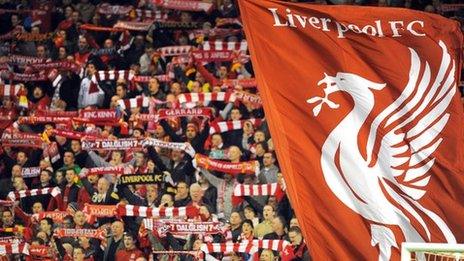Liverpool's Anfield stadium expansion: Construction to begin on Monday
- Published
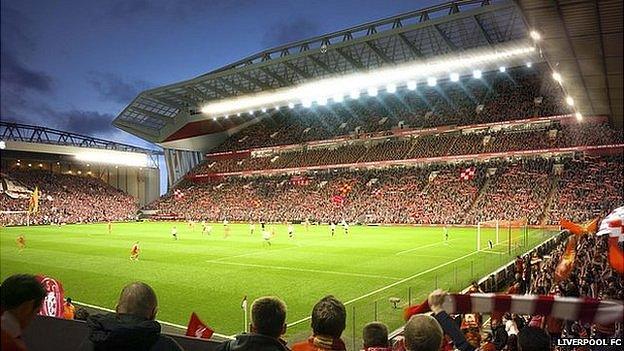
The plans involve expanding the main stand to three tiers, increasing the ground's capacity to almost 59,000
Liverpool say they will begin work on Monday to increase Anfield's capacity from about 45,500 to 59,000.
The five-time European champions' £100m project can go ahead after they completed the purchase of the final house which will need to be cleared in order to make way for the expansion.
The first phase of the work will begin on the Main Stand, which will feature a new third tier, adding 8,300 seats.
The Anfield Road Stand will then be expanded to add a further 4,800 seats.
The work is expected to be completed in time for the 2016-17 season, and will significantly enhance the club's revenues.

The memorial to the 96 fans who died in the 1989 Hillsborough disaster is being moved as part of the plans
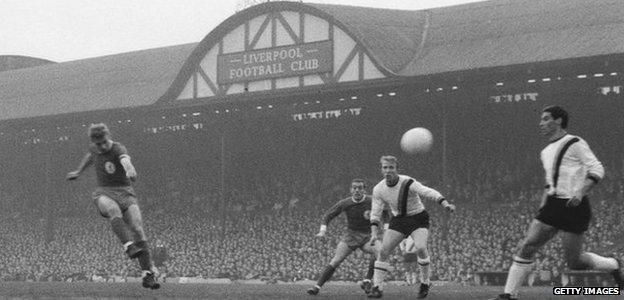
The old Main Stand at Anfield back in 1965
The project will also include additional conference and banqueting facilities, a new club shop and more car parking.
The expansion is part of a wider £260m regeneration of the Anfield area of the city.
According to the planning application approved by Liverpool City Council, the redevelopment will allow the club to host international fixtures and European finals.
It said there are parts of the stadium that currently "fall below current Uefa and Premier League standards, which restrict the club's ability" to host major games.
Uefa insists upon at least a 50,000-capacity stadium, corporate accommodation and a minimum standard for players and match officials' changing rooms.
A memorial to the 96 Liverpool fans who died in the 1989 Hillsborough disaster will be moved to form part of the Hillsborough Memorial Garden.

The history of Anfield
Anfield opened in 1884 with a capacity of about 20,000 and was originally the home of Everton FC, until a row over rent saw the Toffees move across to Goodison Park and the newly formed Liverpool FC take up residence in 1892
The famous Spion Kop opened in 1906 and a redesign in 1928 gave it a capacity of 30,000
Anfield's highest attendance came in 1952, when 61,905 saw the Reds take on Wolverhampton Wanderers
The introduction of seating on the Kop and redesigns of the Anfield Road, Kemlyn Road (Centenary) and Main stands in the 1970s, 80s and 90s brought the stadium to its existing capacity of just over 45,000
Source: Liverpool FC, external

Liverpool chief executive Ian Ayre said that while the expansion project had posed "big challenges", it was preferable to building a completely new stadium in nearby Stanley Park.
"It's great news for the football club," he said. "We've been trying to find a solution to stay at Anfield.
"In many ways it was the hardest solution. If you build somewhere else, you move there when it's finished and there's no disruption.
"But this solution was one that the owners and everybody felt was the right one. Staying at the historical home of Liverpool Football Club and finding a solution that was economically viable was at the heart of that."
Professor Tom Cannon, a football finance expert from the University of Liverpool, said the Reds' long wait for a larger stadium had been holding the club back.
"They are one of the biggest sports franchises in the world, with a global reputation," he said.
"The lack of a ground comparable with [Arsenal's] Emirates, comparable with [Manchester City's] Etihad, comparable with [Manchester United's] Old Trafford, has hurt the club deeply."
Alex Miller, of football industry magazine FC Business, said the expansion could generate an extra £25m per year for the club.
"It's seriously big money and it will allow them to close the gap on the likes of Manchester United and Arsenal," he said.
However, some Anfield residents have objected to the plans, fearing problems with light pollution, car parking and traffic congestion.
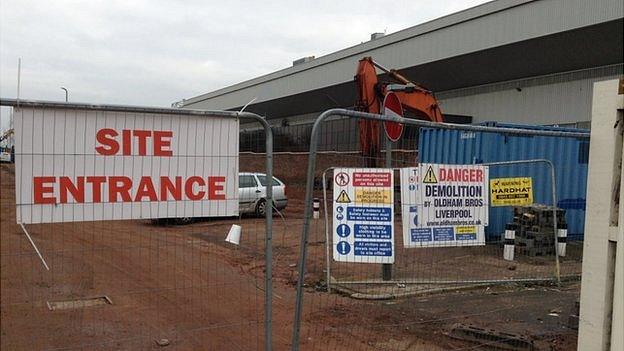
Part of the stadium has already been cordoned off ahead of the planned construction work
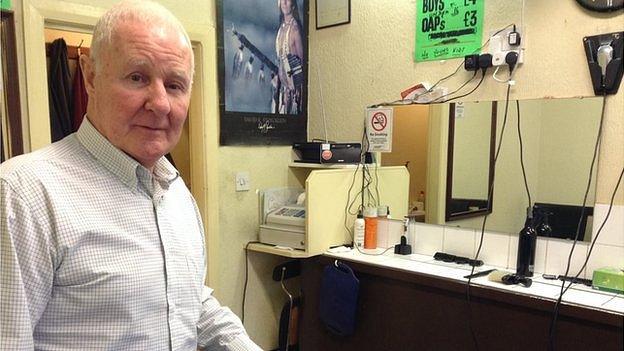
John Page's barber shop will be among the buildings knocked down to make way for the expansion
And some businesses and hoteliers argued closing Anfield Road to redevelop the stadium could affect their custom and clog Walton Breck Road.
John Page's barber's shop will be among the buildings knocked down to make way for the expansion.
He said: "I want to see this go ahead and the area come up again because it's gone down, down, down in the last 20 years. But the shop will go. My business has gone."
Mr Page said he was happy with the situation but would like more support from the club, and is still discussing how much compensation he will receive.
Liverpool CEO Mr Ayre said he understood that there had been "some push-back" to the project from residents, but praised them for their cooperation.
'Huge construction project'
"They consulted with us and gave us their views and that will continue, " he said.
"As much as we've got a great announcement to make today we're also going to be building a huge construction project for the best part of two years in this area.
"For residents that's a tough time and we have to be responsible and respectful of that."
The wider plans to regenerate the Anfield area also include proposals to build 250 new homes and a 100-bed hotel, and to demolish 296 homes.
Last year, a consultation with residents in the area showed more than 80% supported the plans, which were drawn up by a consortium made up of Liverpool City Council, housing providers and Liverpool FC.
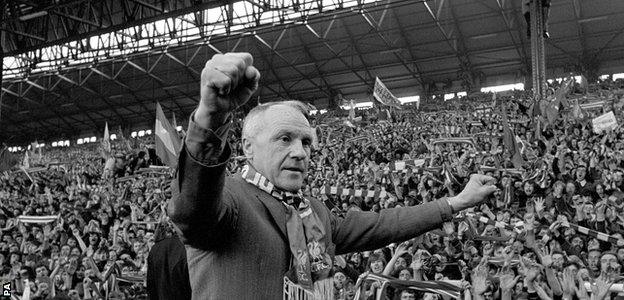
Legendary Liverpool boss Bill Shankly salutes the Kop in 1973 after winning the League
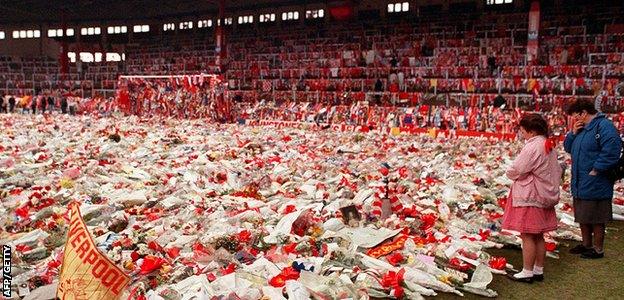
Anfield was turned into a shrine to remember the 96 fans who died in the 1989 Hillsborough disaster
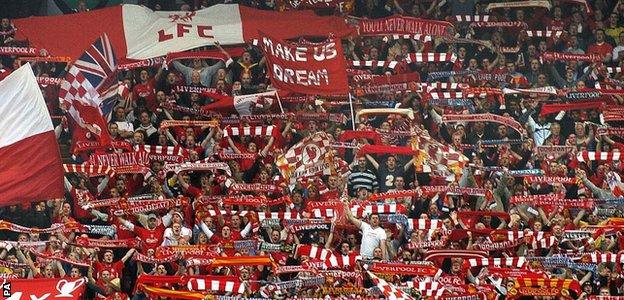
After the subsequent Taylor Report, Anfield became all-seater in 1994. The Kop is still widely known for its spine-tingling atmosphere - as heard during The Reds' 2005 Champions League semi-final win over Chelsea
- Published23 September 2014
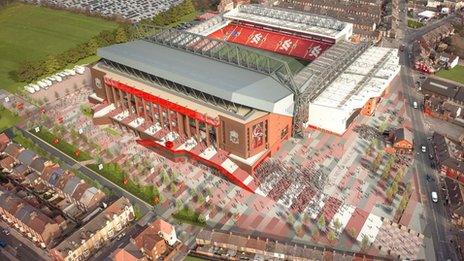
- Published24 April 2014
- Published25 April 2014
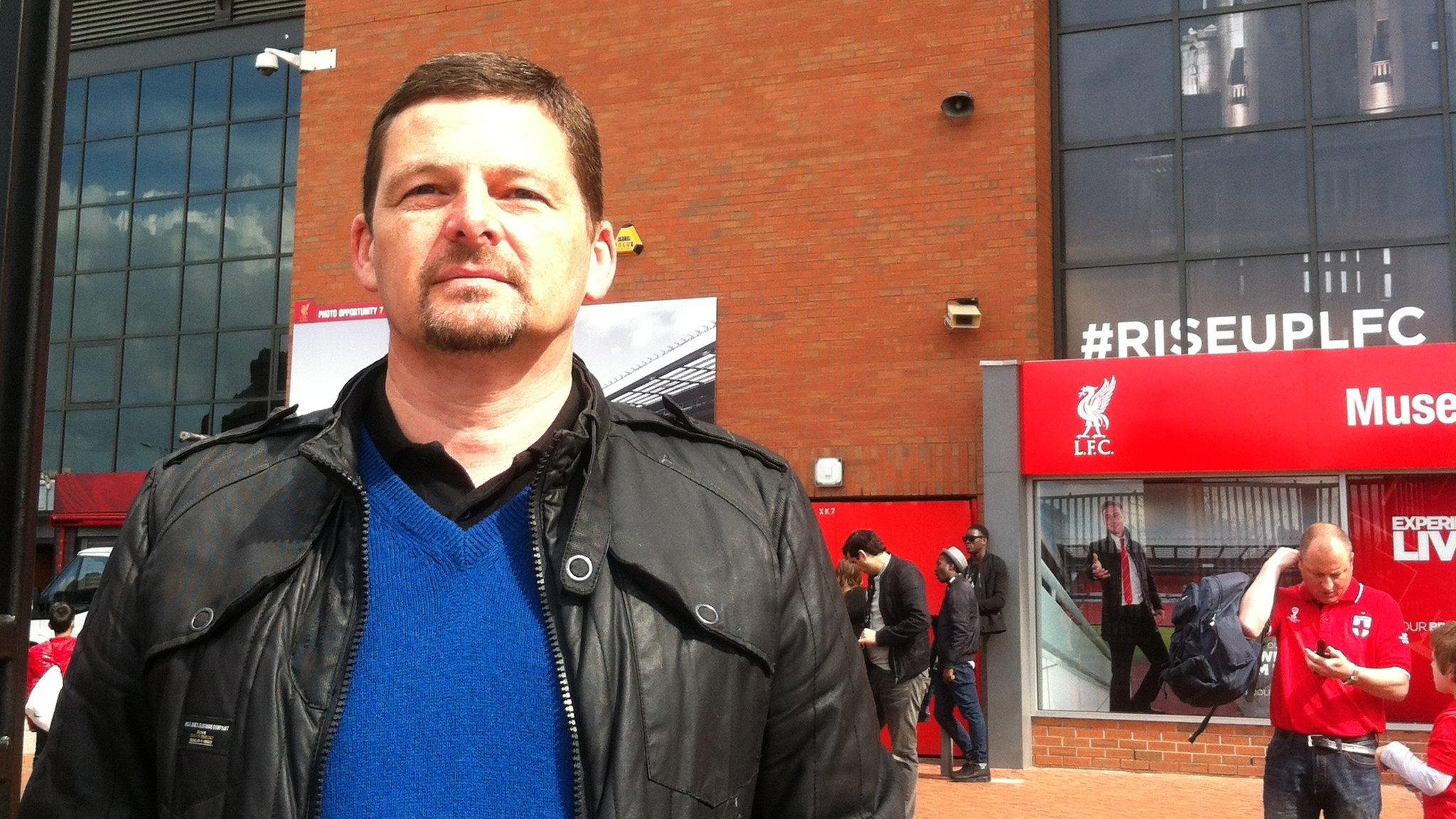
- Attribution
- Published23 April 2014
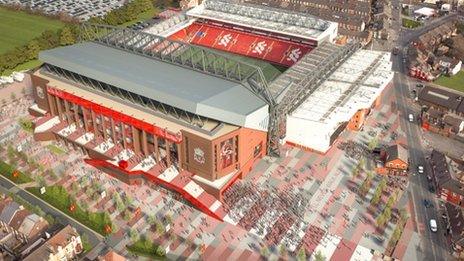
- Attribution
- Published23 May 2012
